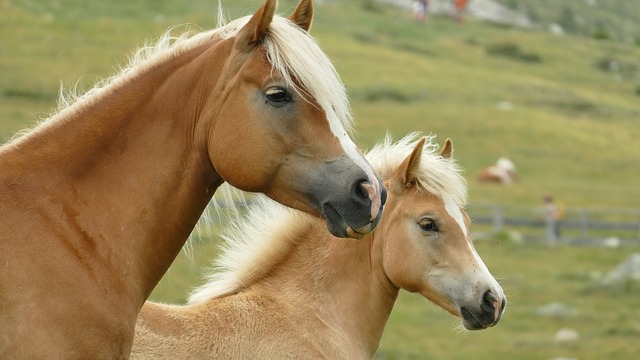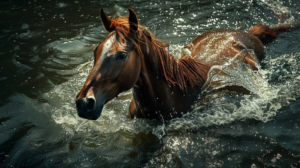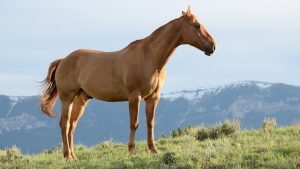Buying a horse is a significant and exciting decision that requires careful planning and consideration. Whether you’re a first-time buyer or an experienced equestrian looking to add to your stable, it’s crucial to approach the purchase with a clear strategy. The thrill of finding the perfect horse is unparalleled, but it’s essential to remember that a successful purchase is built on a foundation of careful consideration and informed decision-making.
The person who is making an effort to get his first horse rarely ever goes about it in a businesslike manner. So often, he has become so horse-conscious and enthusiastic about owning his horse that he overlooks the many things he should be seeking in the horse that he expects to make his mount. I’ve seen how the right horse can transform a rider’s journey, while a poorly matched horse can lead to frustration and unforeseen challenges. It’s not just about finding a beautiful horse; it’s about finding one that aligns with your riding goals, fits your lifestyle, and matches your experience level. By following these detailed tips, you’ll be well-equipped to navigate the complexities of buying a horse and ensure you make a choice that brings joy and fulfillment to you and your new equine partner.
The American Association of Equine Practitioners (AAEP) has approved the following guidelines for reporting equine purchase examinations. These guidelines provide a framework that will aid the veterinarian in reporting a purchase exam and define the buyer’s responsibility to determine if the horse is suitable. This can help identify potential issues and prevent future complications.
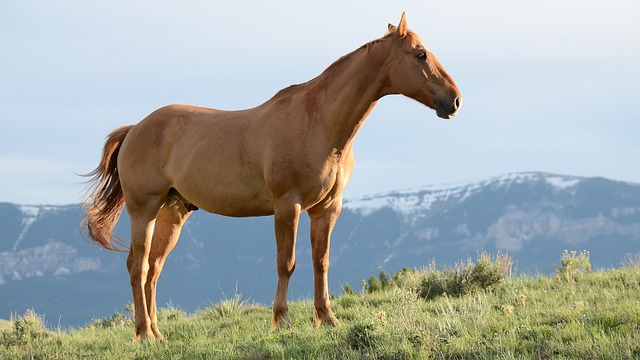
The price should not be the determining factor. For example, a beginner may hesitate to purchase a horse at $200, even though the upkeep and expense may be as much as $500 a year. So, it would be unreasonable to hesitate to purchase a suitable horse just because the seller asked a few dollars more than the purchaser expected to pay when the upkeep cost is so great compared to the original cost.
A horse that gives you no pleasure and satisfaction and is unsuitable for the work you want to do would usually be too expensive regardless of the original cost. You would be better off without the horse, even if you got it as a gift.
The one thing that should be the deciding factor is whether the horse will be satisfactory and whether you will get the pleasure you should have from ownership. Since 1980, there have been many changes in how horses are bought and used by most of the horsemen for whom this book is intended.
Although pleasure riding and showing are the principal uses, there is now a rapidly growing demand and use for breeding horses for racing. Small breeders are now located in many areas where there were none in 1950. These breeders and owners could probably profit from one who has owned horses for fifty years and an observer several years before.
Although the comments here apply to the person getting a private riding horse, most of what I say applies to anyone who requires animals for breeding purposes.
Where to Buy Your Horse
You can buy a riding horse in several places, which may supply just the horse you are looking for. On the other hand, you are just as likely to get a horse that would not be suitable. At least, this is true until you have had considerable experience. Probably the most satisfactory source of a pleasure-riding horse is from a private owner.
I mean the private owner selling his horse, not because there is something wrong with it but because he can no longer keep it. People sometimes buy a pleasure-riding horse only to experience reverses later on or find it necessary for a number of reasons to dispose of it. A careful inquiry will get you fairly correct information on such a horse.
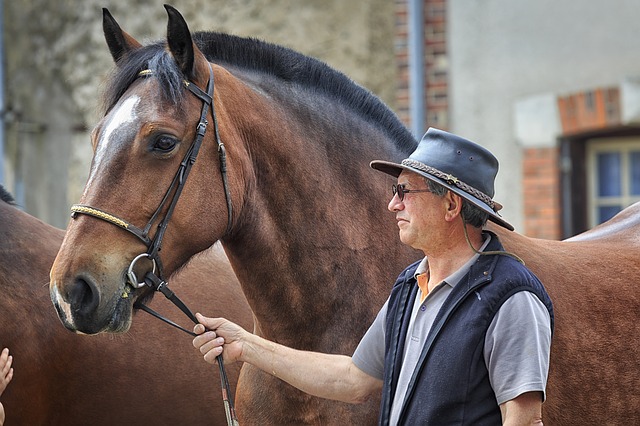
By taking your time and not buying too hurriedly, you can try this horse out and see it under conditions that should tell you whether it would suit you. Of course, some people buy satisfactory horses and then spoil them, or in some instances, the owner is not a practical horseman and does not know what a first-class horse should be able to do.
An intelligent buyer should be able to determine these facts through careful observation and well-placed inquiries. The horse dealer is probably the most widely used source of pleasure-riding horses. There are all kinds of dealers from whom you can purchase your horse, and they have all kinds of horses—good, bad, and indifferent—and the dealers themselves are of all kinds, too.
Some are reliable and will try to sell you the animal best suited for you if you cooperate with them. If you can find a deal with that reputation, you will do best by putting yourself in his hands, telling him exactly what you want, giving him full details of your horse experience, and then acting on his suggestions.
Such a dealer is not as available as he should be. The buyers he meets are largely to blame for this. Many of these pleasure horse buyers think they know more than the horse dealer, and when he realizes that the customer can’t be told anything and that good suggestions are wasted, he is likely to sell the man anything.
Some horse dealers have no scruples, nor do they have any judgment about the ability of an amateur horseman. They will sell horses that they know are unsuitable and should be sold only to the most widely experienced horsemen. Often, they sell these horses without any sort of warning advice.
This kind of dealer almost always gives his horses the same general description. A $50 plug horse will get the same description that the reputable dealer might give a $500 horse. Indeed, dealer, I mean, has only one description and recommendation for every horse he has to sell, and that is that the horse is 100 percent sound, of good age, and will give satisfaction under any conditions. In short, every horse he offers you is perfect.
Another way to get your pleasure-riding horse is at the horse auction. Auction sales are held in various localities, sometimes at regular intervals, maybe once or twice a year. Some of these horse sales are big affairs wherein several hundred heads of horses are sold at a time.
As far as auction sellers know, they offer an honest, fair description of the horse, but when you buy a horse, aside from its soundness and general appearance, you are generally obliged to take and keep what you buy. Horses are mostly consigned by sellers who want to dispose of them. Although many very fine horses go through these sales, many misfits or unsuitable horses are among them, and if you happen to get an undesirable animal, you have little recourse.
There is yet another source of getting a pleasure-riding horse: watch the advertisements in local newspapers or sectional newspapers, horse papers, and other magazines that carry general advertisements. Those who have horses to dispose of are advertising them for sale. You are just as likely to get a satisfactory horse by this method as any other.
In recent years, a type of horse salesman has appeared that one should guard against. This is generally an owner with limited experience in both the use and ownership of a horse. In their eagerness to sell the horse, such owners often exaggerate the qualities, and one of the worst misrepresentations occurs about the animal’s age.
It is not unusual for them to sell a horse as an eight-year-old when he is eighteen or older. This happens far too often. These owners also neglect to tell the buyer about any faults or vices. When they are caught up in such tactics, they usually plead innocent, and that is all the satisfaction the buyer gets.
There is no hard-and-fast rule by which anyone can advise you where you may obtain the ideal horse. Buy your horse where you find it.
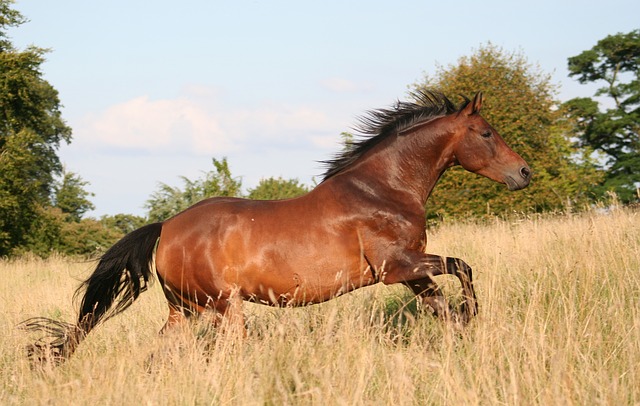
The Horse to Buy
People who buy pleasure riding horses have various notions of the horse they want. Some have a color preference. Many object to and would not own a horse of a certain color even though the animal was 100 percent satisfactory for type, conformation, and the use they expected to make of it. Others want a horse of a certain size.
Often, small people like big horses. Just why is difficult to understand. They are not easy to handle: they are difficult to mount, and the rider cannot truly feel at home in the saddle of an oversized horse. The experienced horseman will hardly ever decide against a horse on color alone. While everyone may prefer color, the horseman with wide experience and knowledge will consider it secondary.
The size of the horse is not always proof that this horse will be most satisfactory, even for the heavy rider. Some very large horses, especially tall horses, may not be a satisfactory weight carrier. A shorter horse and a short-backed horse, one more on the chunky order, will usually carry much more weight, even though the former is two or three inches taller and a couple hundred pounds heavier.
A horse should be balanced in height and length to give the greatest enjoyment and most pleasure. The most satisfactory pleasure horse is that one that shows some evidence of breeding. This is generally shown by legs free from long tufts of hair and by a small head and neat, trim body conformation.
Such horses usually carry considerable blood from saddle, standardized, Morgan, or hundreds of light horse breeds. They are trim and neat in appearance and look good under saddle. One type of horse that often does not make a satisfactory riding horse, although many are recommended for this purpose, is the small, undersized draft or workhorse.
Many of these horses are short, chubby, and have typical draft-horse legs with a lot of hair; their feet are large, and they usually have a heavy, disproportionately large head. The only recommendation for these horses is the size.
Most of them are not very tall—about 15 hands or slightly more- and are usually not too heavy, but they do not have the right body conformation. This type of horse is hard to ride and is not as fast and handy as expected. They are small enough to be a satisfactory draft or workhorse, and the dealers often pass them off as riding horses. They are not of riding quality at all—just a small, undersized draft or workhorse.
Do Not Buy These Horses
I would advise the person to buy a private pleasure mount to pass up the ordinary livery horse or one used in a riding academy or riding stable. Some good horses have been purchased out of these places, but most often, they have seen their best days and are not very satisfactory. Livery horses in most stables develop a lot of tricks; many of them are barn sour and, with the amateur or beginner, are likely to cause a lot of trouble.
They get into the habit of doing whatever they want regardless of their rider, and once they have developed this habit, it is not easy to cure. Livery horses are also undesirable because they have had such hard use that they are worn out.
Some of the better stables watch their horses closely and sell them off after they have had the best use. It is not good business nor profitable to buy a crippled or injured horse regardless of how fine he might be if normal. Cripples may recover and make very fine horses, but there is always the danger that a crippled or injured horse will remain so.
The most common mistake the amateur horseman makes in selecting a personal mount is buying a young, inexperienced horse, perhaps an unbroken colt or one that has been used very little. This is the most unsuitable mount for an inexperienced person to buy.
The chances are great that with an inexperienced horseman and amateur rider such, a horse becomes so badly spoiled as to be utterly useless. For best results, I recommend buying a mature horse, one five to ten years of age that is well broken and trained and that has had the kind of use that you expect to give it Until you have had a lot of experience with horses and know how to handle them under all conditions, you should not buy a horse that has been spoiled.
Under proper handling and management, some spoiled horses can be made into first-class animals. A spoiled horse is usually the result of improper handling by an inexperienced horseman. They are often sold at bargain prices, but the time required to get these horses working satisfactorily is too great, and it is unlikely that the amateur horseman will ever get any satisfaction or pleasure from them.
Avoid them; never buy a horse you believe has been spoiled. Nor would I advise you to buy a very old horse for a personal pleasure mount. Some are very pleasant to ride and use and, in their day, have been rated among the best.
However, if you get one of these old horses, enjoy the horse, and get along well with it, its age begins to make the horse undesirable, and soon, you may find it necessary to retire the veteran. When buying a riding horse, you should remember that dealers usually never offer a horse for sale that is over twelve years old.
They call an older horse ‘‘smooth-mouthed,’’ if you insist on their telling you its age, they will say the horse is about twelve years old. Many of these so-called twelve-year-olds are seventeen or eighteen, maybe even twenty. For this reason, I advise the buyer to try to get a horse of good age—and by that, I mean somewhere between five and ten years old.
Try The Horse Before Buying It
You should ride this horse just as you would expect to ride it if you had purchased it. Don’t depend on a five or ten-minute ride if you expect to buy the horse for use over a long period. Many horses will ride fine for a few minutes or when taken around where they are accustomed to the locality, but they prove worthless away from their home surroundings.
It would be better to have the seller or someone else ride with you on another horse and then ride at some distance from where this horse is stabled. Ride on the highways if possible, or at least ride under the conditions you expect to encounter after purchasing it.
Don’t try this horse if it is already under saddle and turned over to you. I mean by this that if you are interested in purchasing this horse and finding it under saddle and being ridden by someone, do not mount it or give it a trial under such conditions.
Make a future date with the seller or owner, go to the stable or barn where this horse is kept, and start from there. It is a common practice wherever it can be worked with horses that are barn sour or stale to saddle them up, have someone ride them on the trail or along the highway or elsewhere, and when a prospective purchaser wants to try them, drive out in a car to where the horse is being used and try it out from there.
Buying a horse is a rewarding experience that requires careful planning and consideration. By incorporating these tips, statistics, and legal insights into your decision-making process, you can ensure a successful purchase and find a horse that will bring joy and fulfillment to your equestrian journey.

